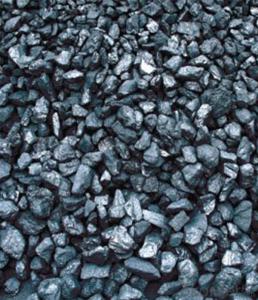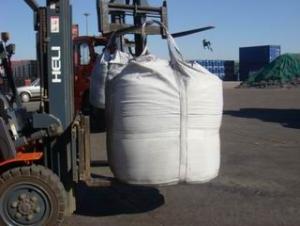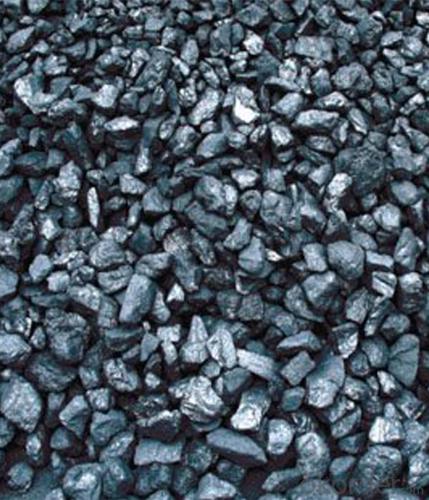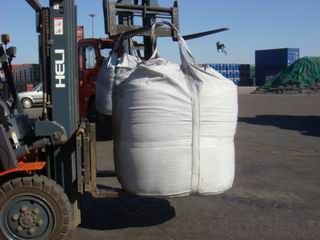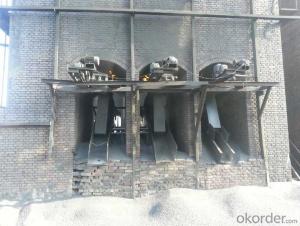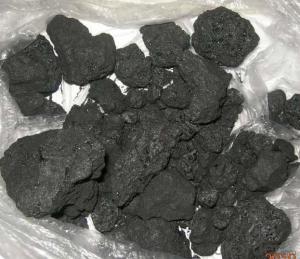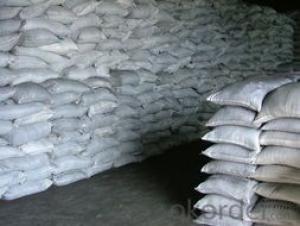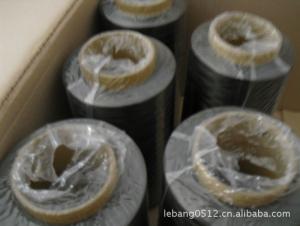FC 94 Percent Calcined Anthracite With High Quality
- Loading Port:
- China main port
- Payment Terms:
- TT or LC
- Min Order Qty:
- 30 m.t.
- Supply Capability:
- 10000 m.t./month
OKorder Service Pledge
OKorder Financial Service
You Might Also Like
Specifications
Calcined Anthracite
Fixed carbon: 90%-95%
S: 0.5% max
Size: 0-3. 3-5.3-15 or as request
Calcined Anthracite is produced using the best Anthracite-Taixi Anthracite with low S and P, It is widely used in steel making and casting, Chemical and some other fields.
General Specification of Calcined Anthracite:
PARAMETER UNIT GUARANTEE VALUE | |||||
F.C.% | 95MIN | 94MIN | 93MIN | 92MIN | 90MIN |
ASH % | 4MAX | 5MAX | 6MAX | 7MAX | 8MAX |
V.M.% | 1 MAX | 1MAX | 1.5MAX | 1.5MAX | 1.5MAX |
SULFUR % | 0.5MAX | 0.5MAX | 0.5MAX | 0.5MAX | 0.5MAX |
MOISTURE % | 0.5MAX | 0.5MAX | 0.5MAX | 0.5MAX | 0.5MAX |
Size can be adjusted based on buyer's request.
Pictures of Calcined Anthracite:
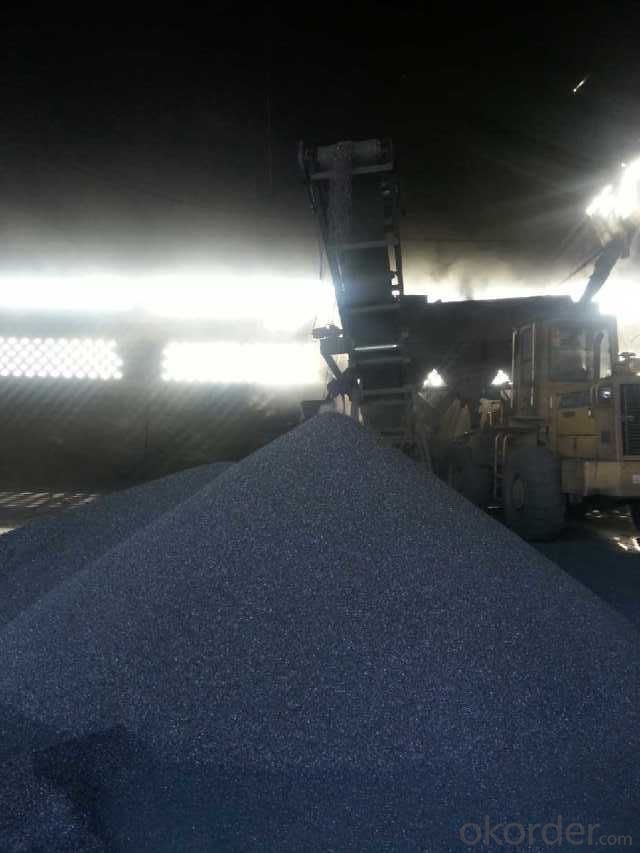

We can supply below furnace charges, please feel free to contact us if you areinterested in any of any of them:
Coke (Metallurgical, foundry, gas)
Calcined Anthracite with fixed carbon from 90% to 95%
Our Service:
1. Your inquiry related to our products or prices will be replied in 24hours.
2. Manufacturer with large capacity, ensure the fast production cycle after confirmed the order.
3. Our professional technicians will answer your entire enquiry in patient.
4. To meet the refractory solutions, we can serve as your instructions.
5. Protection of sales area and private information for our entire customer.
- Q: Process for producing carbon fiber board
- Carbon fiber forming process:1, pressing method. This method is put into the carbon fiber prepreg resin has the metal mold, the pressure of excess glue overflow, then high temperature curing, stripping the finished products come out, this method is the most suitable for production of auto parts.2, hand paste layer method. The impregnated carbon fiber sheets are cut or laminated, or so that the sides of the layer are brushed with resin and then pressed to form. This method can be used arbitrarily to select the direction, size and thickness of fibers and is widely used. Note that the shape of the layer is smaller than the shape of the mold, so that the fiber will not bend when it is pressed in the mold.3 、 vacuum bag hot pressing method. Laminated on the mold hill and covered with heat-resistant film, applying pressure from the soft pocket to the laminate and curing in hot pressing.4, winding forming method. The carbon fiber monofilament is wound on the carbon fiber shaft, and is especially suitable for making cylindrical and hollow containers.5, pultrusion. The carbon fiber is fully infiltrated, and the resin and air are removed by extrusion, then solidified in the furnace. The method is simple and suitable for preparing rod shaped and tubular parts.
- Q: How is carbon used in the production of diamonds?
- The production of diamonds relies heavily on carbon, which is the primary component that constructs the diamond's structure. Deep within the Earth's mantle, where there are extreme levels of heat and pressure, carbon atoms bond together in a distinctive crystal lattice formation, giving birth to diamonds. This natural process, called carbon crystallization, takes place over an extensive period of millions of years. To create synthetic diamonds, scientists recreate these intense conditions in a laboratory. They employ high-pressure, high-temperature (HPHT) machines to subject a tiny piece of carbon, like graphite, to immense pressure and heat. This simulation imitates the natural process that occurs in the Earth's mantle, allowing the carbon atoms to rearrange themselves and transform into diamonds. An alternative method, known as chemical vapor deposition (CVD), involves the controlled use of a hydrocarbon gas, such as methane, in a specific environment. The gas is introduced into a chamber and heated, causing the carbon atoms to separate from the hydrogen atoms. These carbon atoms then settle on a substrate, like a diamond seed, and gradually accumulate layer by layer, eventually forming a diamond. In both methods, carbon acts as the fundamental building block for the diamond's structure. By manipulating the conditions in which carbon atoms are exposed to extreme heat and pressure, scientists and manufacturers are able to control the growth and formation of diamonds. This manipulation allows for the production of synthetic diamonds that possess identical physical and chemical properties to natural diamonds. In conclusion, carbon plays an indispensable role in the production of diamonds, serving as the essential element that facilitates the formation and growth of these valuable gemstones.
- Q: What are the impacts of carbon emissions on the availability of freshwater resources?
- Carbon emissions have significant impacts on the availability of freshwater resources. As carbon dioxide levels rise in the atmosphere, global temperatures increase, leading to changes in precipitation patterns and increased evaporation rates. These changes disrupt the natural water cycle, causing droughts and decreased water availability in certain regions. Additionally, carbon emissions contribute to the melting of glaciers and polar ice caps, which further reduces freshwater supply. Overall, carbon emissions exacerbate water scarcity, posing serious challenges to both human populations and ecosystems that rely on freshwater resources.
- Q: What is carbon offsetting in the fashion industry?
- In the fashion industry, carbon offsetting refers to the act of compensating for the greenhouse gas emissions produced during the production, transportation, and disposal of clothing and accessories. This involves investing in projects or activities that reduce or eliminate an equal amount of carbon dioxide (CO2) from the atmosphere, thereby counterbalancing the emissions generated by the industry. Fashion has gained notoriety for its significant role in environmental degradation, with textile production, manufacturing processes, and transportation all contributing to carbon emissions. Carbon offsetting offers a means for fashion brands and companies to take accountability for their carbon footprint and strive towards reducing their environmental impact. There are various methods for implementing carbon offsetting in the fashion industry. One prevalent approach involves supporting renewable energy initiatives, such as wind farms or solar power plants, that generate clean energy and reduce reliance on fossil fuels. By investing in these projects, fashion brands can offset a portion of their emissions by supporting the production of renewable energy, which displaces the need for energy derived from fossil fuels. Another method of carbon offsetting involves reforestation or afforestation projects. Trees play a critical role in absorbing CO2 from the atmosphere, so planting trees or conserving existing forests can help offset emissions. Fashion companies can invest in projects that protect existing forests from deforestation or support initiatives that plant trees in areas affected by deforestation or land degradation. Furthermore, some fashion brands choose to offset their carbon emissions by investing in projects that capture and store carbon dioxide from the atmosphere, such as carbon capture and storage (CCS) technologies. These projects primarily focus on removing CO2 emissions from industrial processes, preventing their release into the atmosphere. It is important to recognize that carbon offsetting should not be viewed as a comprehensive solution to the fashion industry's environmental impact. While it can help mitigate some emissions, it is crucial for brands to prioritize reducing their carbon footprint through sustainable practices. This includes using eco-friendly materials, improving energy efficiency, and implementing circular fashion initiatives. In summary, carbon offsetting serves as a strategy for the fashion industry to compensate for the greenhouse gas emissions generated throughout the supply chain. By investing in projects that reduce or eliminate an equal amount of CO2 from the atmosphere, fashion brands can take strides towards minimizing their environmental impact and working towards a more sustainable future.
- Q: How does carbon contribute to air pollution?
- Carbon contributes to air pollution primarily through the combustion of fossil fuels. When carbon-based fuels such as coal, oil, and natural gas are burned for energy, they release carbon dioxide (CO2) into the atmosphere, which is a greenhouse gas that contributes to global warming and climate change. Additionally, incomplete combustion of these fuels can produce other pollutants such as carbon monoxide (CO), volatile organic compounds (VOCs), and particulate matter, which all have detrimental effects on air quality and human health.
- Q: What are the properties of carbon nanotubes?
- Cylindrical structures made entirely of carbon atoms are known as carbon nanotubes. They possess a distinct set of properties that make them highly sought after in various fields of science and technology. Some of the notable properties of carbon nanotubes are as follows: 1. Remarkable strength and stiffness: Carbon nanotubes have an exceptional strength-to-weight ratio, making them one of the strongest materials discovered so far. They are approximately 100 times stronger than steel, yet significantly lighter. This characteristic renders them suitable for applications requiring lightweight materials with high strength. 2. Excellent electrical conductivity: Carbon nanotubes exhibit excellent electrical conductivity, enabling efficient flow of electrical current. They can be utilized as conductive components in diverse electronic devices, including transistors, sensors, and energy storage systems. 3. Efficient thermal conductivity: Carbon nanotubes possess high thermal conductivity, allowing efficient heat transfer. This property makes them ideal for applications requiring effective dissipation of heat, such as thermal management in electronic devices. 4. Flexibility and resilience: Carbon nanotubes are highly flexible and can endure substantial deformation without fracturing. They can be bent and twisted without compromising their structural integrity, making them suitable for applications demanding flexibility, such as flexible electronics. 5. Unique optical and mechanical properties: Carbon nanotubes possess distinctive optical properties that vary depending on their structure and arrangement. They can absorb and emit light across a wide range of wavelengths, making them valuable in applications like photodetectors and solar cells. Additionally, their mechanical properties, including elastic deformation, contribute to their usefulness in applications requiring shock absorption and impact resistance. 6. Chemical stability: Carbon nanotubes exhibit high chemical stability, enabling them to resist degradation or corrosion when exposed to different chemical environments. This characteristic makes them suitable for applications in harsh conditions or as protective coatings. 7. Large aspect ratio: Carbon nanotubes possess a high aspect ratio, with lengths often exceeding thousands of times their diameter. This characteristic allows them to form robust and lightweight composite materials when integrated into a matrix, enhancing the overall strength and stiffness of the composite. In conclusion, the combination of properties displayed by carbon nanotubes makes them an intriguing and versatile material with enormous potential in various applications, including electronics, aerospace, medicine, and energy storage.
- Q: What is the most common isotope of carbon?
- The most common isotope of carbon is carbon-12.
- Q: How do humans contribute to carbon emissions?
- There are several ways in which humans contribute to carbon emissions. One significant source of carbon emissions arises from the burning of fossil fuels for electricity, transportation, and heating purposes. This involves the combustion of coal, oil, and natural gas, resulting in the release of carbon dioxide (CO2) into the atmosphere. The use of these fossil fuels is widespread in our everyday lives, from powering our homes and vehicles to manufacturing goods and producing food. Furthermore, deforestation, which is primarily caused by human activities such as agriculture, logging, and urbanization, also adds to carbon emissions. Trees absorb CO2 and release oxygen, so when they are cut down, the stored carbon is released back into the atmosphere. Additionally, industrial processes like cement production and chemical manufacturing also emit significant quantities of CO2. Lastly, the livestock industry, particularly the production of beef and dairy products, contributes to carbon emissions through the release of methane from livestock and the deforestation required to expand grazing areas and cultivate animal feed. In conclusion, human activities directly and indirectly contribute to carbon emissions, underscoring the necessity for collective efforts to mitigate and reduce our environmental impact.
- Q: Whether the CO2 content in the boiler smoke can not be measured, the measurement of carbon content of fly ash ah? @ @ Thank you very much!!!
- Just like oxygen measuring zirconia, the CO2 content has a specialized CO2 sensor that can be measured directly
- Q: Wrought iron, steel, cast iron, cast iron, according to the content of the carbon? How many?
- According to the carbon content, but not all. The wrought iron should be called industrial pure iron, the carbon content is below 0.02%, the carbon content of steel at 0.02-2.11%, the carbon content of pig iron in about 2.5-4.3%, and the carbon content of iron in 2.11-4%.
Send your message to us
FC 94 Percent Calcined Anthracite With High Quality
- Loading Port:
- China main port
- Payment Terms:
- TT or LC
- Min Order Qty:
- 30 m.t.
- Supply Capability:
- 10000 m.t./month
OKorder Service Pledge
OKorder Financial Service
Similar products
Hot products
Hot Searches
